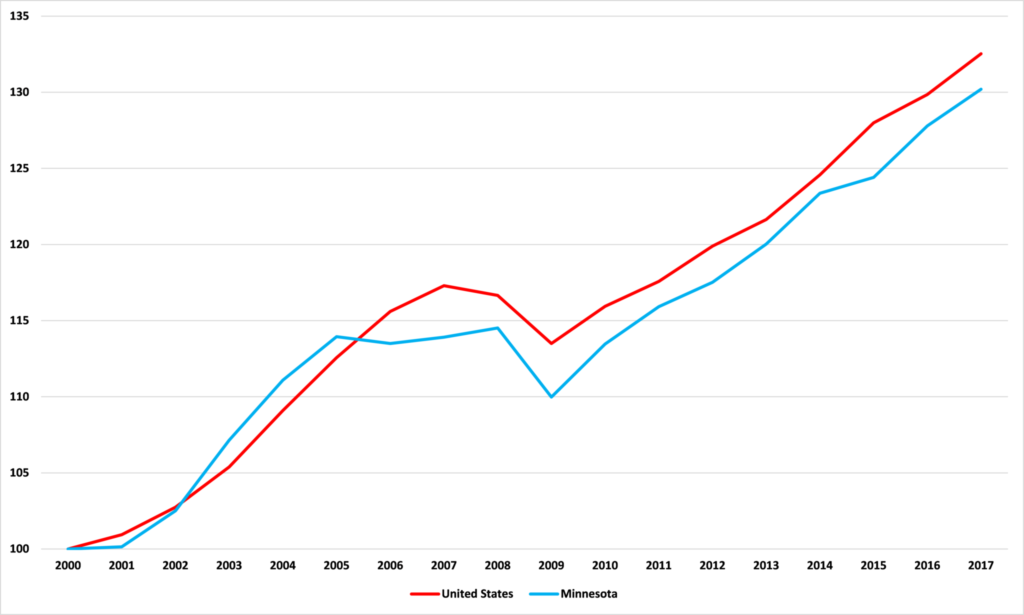New data shows that Minnesota’s economic growth lagged the nation in 2017
In our report The State of Minnesota’s Economy: 2017, we wrote that over the period 2000 to 2016, our state’s economic growth had lagged the national average. Indeed, Minnesota’s GDP was 2.5% smaller in 2016 than it would have been if growth had matched the national average over that period.
In 2017, Minnesota’s economic growth lagged the nation. Again
On Friday, the Bureau of Economic Analysis released its preliminary estimates for state GDP for 2017. Sadly, it continued the 21st century trend.
From 2016 to 2017, the US economy grew at the rate of 2.1% in real terms. Minnesota’s economy grew by just 1.9%. This ranked our state 23rd in the nation for economic growth last year. As Figure 1 shows, since 2000, the US economy has grown by 32.5% in real terms. In Minnesota, that figure is 30.2%. This ranks our state 27th for economic growth so far this millennium.
Figure 1: GDP growth in the United States and Minnesota, 2000 to 2017 (2000=100)

Source: Bureau of Economic Analysis
No, it isn’t ‘convergence’
You will often hear it said that this is simply because Minnesota started off rich. As a result, it is argued, ‘convergence’ says that its higher level of income means it will have a lower rate of income growth.
The facts show this argument to be false. As I’ve written before, a recent paper by Peter Ganong of the University of Chicago and Daniel Shoag of Harvard finds that incomes across states converged at a rate of 1.8% per year from 1880 to 1980. Since then, however, there has been hardly any convergence at all. In other words, over the entire period of our data, there has been no income convergence between states. It follows that this convergence cannot be to blame for the growth figures seen in that period.
What does this mean?
The difference between 1.9% and 2.1% might not sound like much. But, thanks to the power of compound numbers, it adds up. If Minnesota’s economic growth had only matched that of the nation generally since 2000, our state’s GDP would have been $5.5 billion higher in 2017, or $982 for every man, woman, and child in the state.
In 2016 we reported that Minnesota’s economic performance was mediocre. In 2017 we said that it was lackluster. Sadly, it looks like we’ll be going back to the thesaurus later this year.
John Phelan is an economist at the Center of the America Experiment.